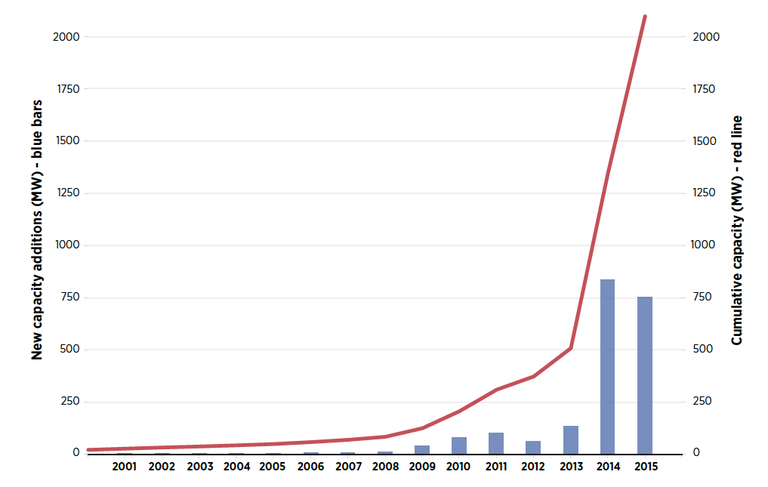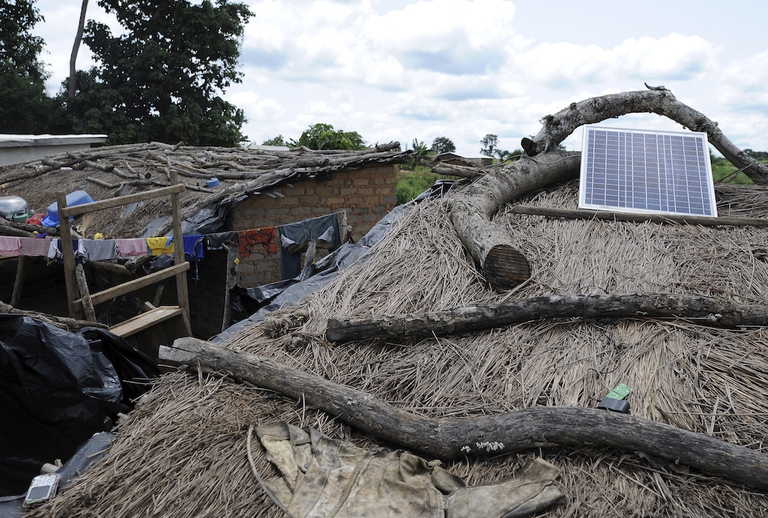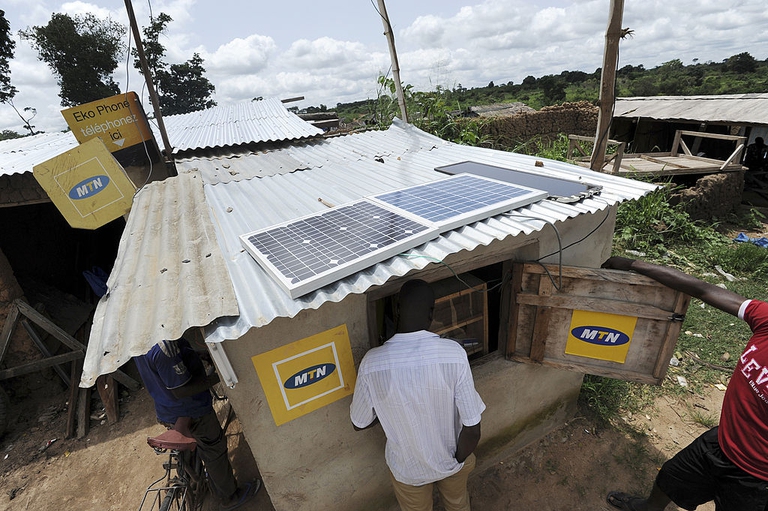
A group of experts in Tokyo suggested pouring radioactive water from Fukushima into the open sea. A marine biochemist explains the consequences of this absurd decision.
Solar energy in Africa meets the annual electricity needs of off-grid households for as little as 56 dollars per year, thanks to cost reduction and technology improvements.
From 2012 to today costs for solar plants in Africa fell by 61 percent. This was unimaginable a few years ago, but today it is the prerequisite to promote the spread of photovoltaic plants on a large scale in the continent and bring clean electricity to 600 million African people.
There are just a few regions on Earth that can rely on a solar irradiation like that of African countries. IRENA, the International Renewable Energy Agency, in its new report entitled Solar PV in Africa: costs and markets, explains that solar energy is spreading throughout Africa and that this is a turning point for the continent’s (sustainable) development.
Solar energy lights up Africa
Africa’s total installed capacity of solar PV jumped from around 500 MW in 2013 to around 1,330 MW in 2014 and 2,100 MW at the end of 2015, according to IRENA. Therefore, it more than quadrupled in two years. This solar revolution could be home to more than 70 GW of solar PV capacity by 2030.
In absolute terms, the current installed capacity is still limited compared to other countries such as Germany, but Africa’s potential is considerable. This growth confirms that energy poverty can’t be eradicated using low-cost fossil fuels including coal, gas and oil.
“Africa’s solar potential is enormous, with solar irradiation levels up to 117 per cent higher than in Germany, the country with the highest installed solar power capacity. It has never been more possible, and less expensive for Africa to realise this potential”, IRENA’s Director-General Adnan Amin commented.
Africa will power its future with solar photovoltaics and other renewables, given that their costs are decreasing and becoming increasingly competitive than those of fossil fuels. Solar energy in Africa could rapidly boom thanks to recent and expected cost reductions in renewable power generation technologies and support policies adopted by some of the continent’s countries. If since 2012 the cost of solar energy in Africa dropped by 61 percent, a similar cost reduction can occur in the next decade.
Cost reduction and solar irradiation present a great opportunity for Africa. According to the Agency, it would take just 56 dollars a year to light up an African household. “Both grid-connected and off-grid solar PV now offer a cost-competitive means to meet rising energy needs and bring electricity to the 600 million Africans who currently lack access”, Amin said.
This doesn’t take into account the improvement in the quality of energy services using LED lights. A 2 W LED light produces around 380-400 lumens of light compared to 8-40 lumens for a kerosene wick lamp. This makes an enormous difference in terms of quality of life as well as reduction of air pollution. In India, where the national railways planned to install new solar plants in the country’s remotest railway stations, new measures to save energy and water have been adopted and new low-cost lighting systems are now used thanks to LED technology.
According to IRENA, solar energy is a technology particularly suitable for Africa. On-grid as well as off-grid solar plants can be built there to meet the needs of households or small villages. This technology has another advantage: project lead times are among the shortest of any power generation technology and can be deployed much more rapidly than many other generation options. A significant benefit given the pressing need across Africa for low-cost and easily-accessible electricity.
Today there are a range of applications for solar PV to promote productive activities. These include thermal collectors to power a solar dryer for the dehydration of fruits and vegetables or for cleaning threshed agricultural products but also technology where PV plants are used to power telecommunication stations in a continent where over 700 million people have access to mobile phones.
Solar energy in Africa could bring about an energy revolution and contribute to mark an important stage in the development of the African continent.
Siamo anche su WhatsApp. Segui il canale ufficiale LifeGate per restare aggiornata, aggiornato sulle ultime notizie e sulle nostre attività.
![]()
Quest'opera è distribuita con Licenza Creative Commons Attribuzione - Non commerciale - Non opere derivate 4.0 Internazionale.
A group of experts in Tokyo suggested pouring radioactive water from Fukushima into the open sea. A marine biochemist explains the consequences of this absurd decision.
A federal court in Washington, D.C. has struck down the Dakota Access Pipeline, following years of campaigning by the Standing Rock Sioux tribe.
The Scottish island of Eigg is self-sufficient for its energy needs, relying almost entirely on renewable sources, especially thanks to a coordinated community effort.
President Magufuli in unmovable in going ahead with the Stiegler’s Gorge dam despite conservationists’ warnings of the damage it will cause the Selous Game Reserve’s ecosystem and wildlife.
A large dam along the Luangwa River in Zambia would have posed a serious risk to local people and wildlife, leading hundreds of thousands to oppose it. A call to which the government responded by halting plans to build it.
The first one megawatt solar power plant in the Chernobyl exclusion zone has become operational. This is the first step in a renewable energy development project promoted by the Ukrainian government in the area.
A tanker exploded at a gas and petrol station in Nigeria’s Nasarawa state on the 10th of September, killing 35 people and leaving some burned beyond recognition; 3 citizens had several spine and brain injuries, 2 of them are still on Intesive Care Units. Fela Habila , a local singer, is now stable and out of danger but
The largest tidal power plant in the world will be built in the Larantuka Straits. It will serve 100,000 people and help overcome some of the challenges of energy provision in Indonesia.
Robben Island’s solar energy micro-grid project will produce almost one million kilowatt hours of electricity annually, significantly reducing the cost and impact of buying diesel.










